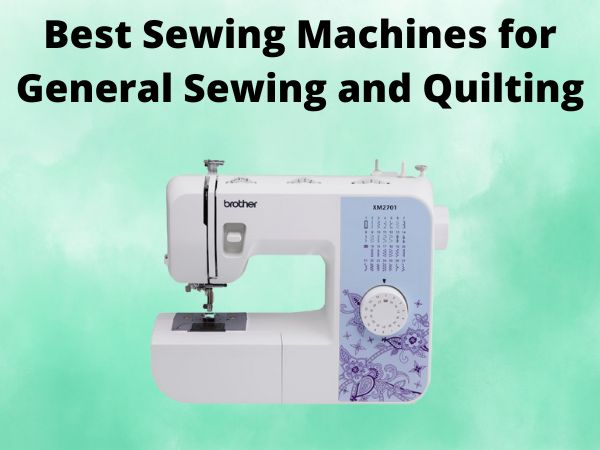How to Adjust Lower Tension on Brother Sewing Machine [Correctly]
If you’ve ever felt like your sewing projects are trying to have a rebellious streak of their own, you might be facing a common issue: tension problems on your Brother sewing machine. It’s like your sewing machine is playing tug-of-war with the thread, and you just can’t seem to get it right. But don’t worry! I’ve got you covered. Let’s dive into the art of adjusting the lower tension on your Brother sewing machine so you can sew like a pro.
Table of Contents
Understanding the Basics of Sewing Machine Tension
Before we start adjusting, let’s uncover the mystery of sewing machine tension. Think of tension as the puppeteer controlling the threads, ensuring they meet perfectly in the middle of your fabric. When the upper and lower threads entwine harmoniously, that’s when sewing magic happens. But if one side is tugging too hard or too soft, all bets are off.
What is Lower Thread Tension?
The lower thread tension refers to the tension applied on the bobbin thread. It plays a pivotal role in forming balanced stitches. If you’re noticing loops on the underside of your fabric, it’s likely the bobbin thread needs adjusting.
Indicators of Improper Lower Tension
- Excessive looping of bobbin thread underneath fabric
- Fabric puckering
- Irregular stitching
Getting Started: Gather Your Tools
Just like any epic adventure, you’ll need the right tools before you begin. Grab the following essentials:
- Your Brother sewing machine manual
- A small screwdriver (most machines come with one)
- Scrap fabric for testing
Steps to Adjust Lower Tension on Brother Sewing Machine
Step 1: Set Up Your Machine
Ensure your sewing machine is turned off. Place it on a stable surface to prevent any mishaps. Prepare your machine by setting it up with the appropriate needle and thread for your test fabric.
Step 2: Access the Bobbin Case
The bobbin case houses the bobbin, and it’s the key to adjusting the lower tension. On Brother machines, this is typically accessed by removing the extension table or opening the bobbin door.
Step 3: Locate the Tension Screw
Once you have the bobbin case in hand, identify the small tension screw. This delicate screw is what adjusts the tightness of the bobbin tension. Think of it as the tension maestro orchestrating the perfect stitch symphony.
Step 4: Making Adjustments
Use the screwdriver to turn the tension screw:
- Clockwise: Increases tension.
- Counter-clockwise: Decreases tension.
Adjust in small increments—a quarter turn or less. This ensures subtle changes, allowing you to find the sweet spot without overcompensating.
Step 5: Test Your Adjustments
Place your test fabric under the presser foot and sew a few lines. Examine the stitches closely. The goal is to have balanced stitches with both top and bottom threads meeting ideally in the middle.
Troubleshooting Common Issues
Stitches Still Unbalanced: What to Do?
If after a few adjustments your stitches are still misbehaving, don’t panic! It could be a sign that the upper tension needs some attention too. Make sure both tensions are working in harmony.
Thread Breaking Frequently
If your thread keeps snapping, it might be a sign that the tension is too high. Ease up on the tension screw slightly and try again.
Machine Jamming or Skipping Stitches
Ensure the bobbin is wound correctly and that you are using the right needle and thread compatibility for your fabric type.
Maintenance Tips for Optimal Sewing
If you want your Brother sewing machine to purr like a content cat, regular maintenance is key. Here are some tips to keep it in tip-top shape:
- Clean the bobbin area regularly to remove lint and dust.
- Oil the machine as instructed in the manual.
- Replace needles frequently to avoid dullness.
Conclusion
Adjusting the lower tension on your Brother sewing machine doesn’t have to feel like cracking a code. With these steps, you should be well on your way to creating beautifully sewn projects without the headache of tension woes. Remember, practice makes perfect, and soon enough, adjusting tension will be second nature to you.
FAQs
How often should I adjust the lower tension?
It’s not necessary to adjust the lower tension frequently. Only do so when you notice stitching issues, like excessive bobbin thread loops.
Can I use any screwdriver to adjust the tension?
It’s best to use the small screwdriver provided with your sewing machine to avoid damaging the tension screw.
What if I lose my machine manual?
Most Brother sewing machine manuals are available online as PDF downloads on the Brother official website.
Is it possible to damage the machine by adjusting the tension?
Not if done carefully. Always adjust the tension in small increments to prevent overtightening or loosening.
Why is my sewing machine still not working after adjusting the tension?
There may be other underlying issues such as a misthreaded machine, incorrect needle usage, or even motor problems that require professional servicing.





